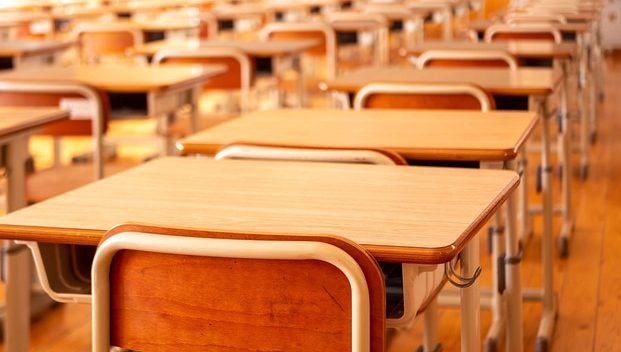Chronic absence numbers drop for Prince Edward schools
Published 7:07 pm Saturday, April 13, 2024
|
Getting your Trinity Audio player ready...
|
The good news is the absence numbers keep dropping. The bad news is they’re still pretty high. Prince Edward County Schools Superintendent Dr. Barbara Johnson outlined where the district stands with chronic absenteeism when she spoke with county supervisors on Tuesday, April 9. Speaking during their regular meeting, Johnson explained that currently, 21% of the elementary students, 18% of middle school students and 23% of high school students in Prince Edward are considered to be chronically absent. That is, they’ve missed more than 10% of classes so far this year.
To be clear, while that’s not exactly at the goal of 10% or less, it’s still showing improvement. Last year, a total of 29.55% of students attending Prince Edward Elementary were chronically absent. That means out of 704 students at the school, 208 missed either 10% of classes or higher. At Prince Edward Middle School, 30.56% of students were chronically absent, while the same could be said of 30.15% of Prince Edward High students last year. Johnson said teachers and staff across the district are trying to drop those numbers even lower.
“We have incentivized attendance significantly this year, more than we ever have,” Johnson said. “We have giveaways, we have pop-ups.”
A pop-up, for example, is when an administrator goes on random days to different schools and random students can win prizes. The district is also working on bigger prizes, like a trip for third and fourth graders to Washington D.C. The district now also has a support specialist who specifically works with attendance and chronic absenteeism. And, if the incentives don’t work, the district staff informs parents of truancy laws and files paperwork with the courts.
A solution for absence numbers
Prince Edward Supervisors Cannon Watson and Harrison Jones asked about solutions, if there was any way to fix the problem. Johnson said part of the issue is that some parents are willing to work with the district and others aren’t.
“Some are very open to any support we may provide or working in partnership with us and some are not,” Johnson said. “Some will say I can’t do anything with him.”
Jones asked how many, or what percentage of parents, aren’t willing to work with the district. Johnson responded that she couldn’t give him that number, just because by the time the conversation reaches her, the tone is different than when the parents are speaking to a teacher or administrator.
“I think in any parent’s mind, they are doing the best that they can do,” Johnson said. “There are some, who, particularly when their children get older, so particularly in middle or high school, they tend to give more freedom because they think they’re older and able to make better decisions. And that’s not always true.”
Supervisor Dr. Odessa Pride raised concerns about the 23% number at the high school.
“If they are not doing well in the classes, what are they going to do on the SOL test?” Pride said. “They’re not going to be able to read them and do well. That’s a big big concern.”
She asked Johnson what steps are being taken on the high school level to help students.
“Some of the same types of incentives,” Johnson said. “(The) high school is doing dances as incentives. They’re doing day trips as incentives.They’re simply trying to incentivize coming to school. It’s very difficult for us to make children come to school.”
Getting students engaged
Johnson also acknowledged that part of the absence numbers issue stems from the district, with some classes just not being as interesting to students.
“I will say sometimes it is engaging and sometimes it is not engaging,” Johnson said. “And that is being very truthful. And that makes a big difference for some children. (Growing up), my mother very clearly said it doesn’t matter whether you like it or not, you’re going. I revered my mother, I was going. That is not necessarily the case these days. For some children, it’s not as engaging as they want it to be. They have technology, cell phones, chrome books, they find other things to do.”
Supervisor Llewellyn Gilliam said he’s been told it’s hard to keep kids’ attention.
“The word I hear is they get bored real quick and you have to stay after them,” Gilliam said.
Johnson acknowledged that, saying some attempts were more successful than others. But she also said district staff may need to rethink ways of doing things.
“I think some years we get excited about all the technology and forget that engagement is far more important than the technology,” Johnson said. “Technology is nothing but a tool.”





